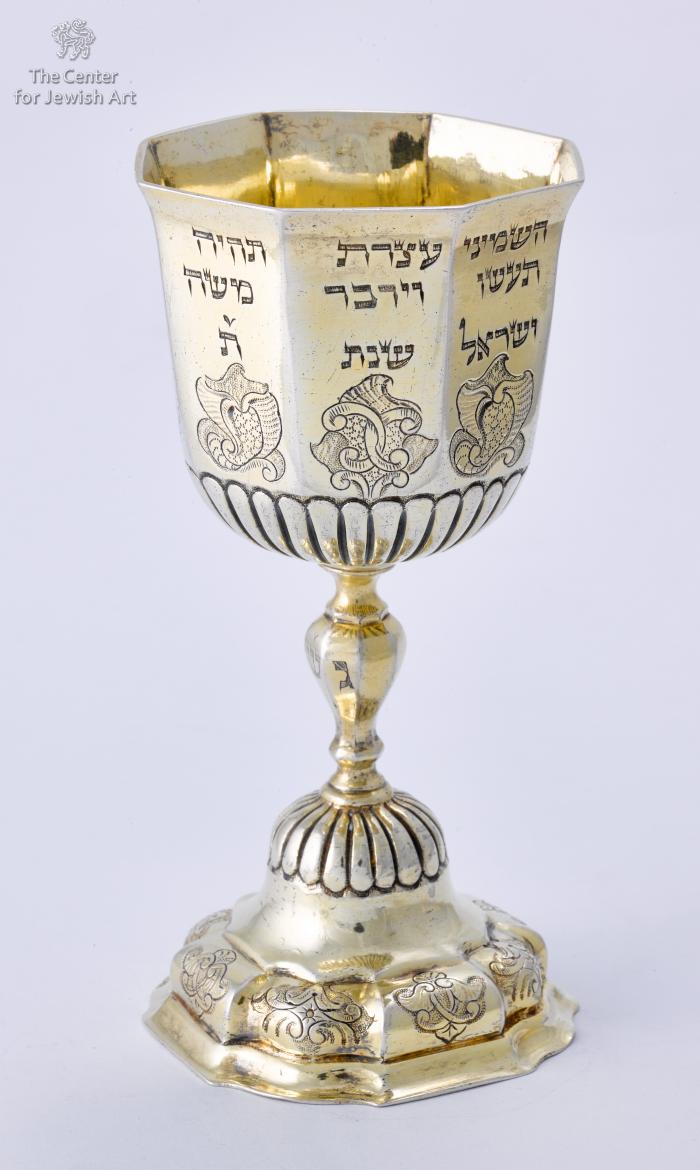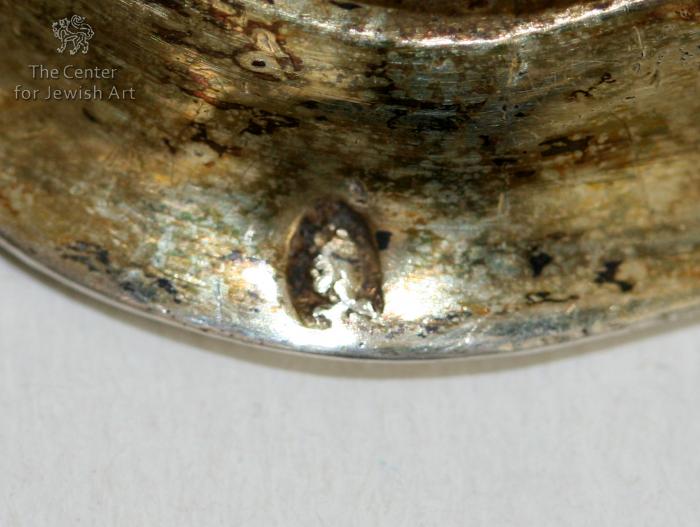Obj. ID: 35809 Kiddush cup, Augsburg, 1748

sub-set tree:
The following description was prepared by William Gross:
This eight-sided form came to be known as the "Jewish" cup in Germany culture. Even today antique dealers recognize this style as a Jewish object. Such cups are known in many collections. They were made from the 1730's to the beginning of the 19th century. There are three distinct periods of their appearance: the first is the 1730's, the second is the 1760's and the third, from Nuremberg, in the late 18th century. This cup is from the first period and by a very skilled silversmith, by the name of Johannes Mittnacht, a member of a family of silversmiths who made such cups for two generations. This example is not only extremely graceful in its design and execution, with the most delicate engraved decorations, but has wonderful gilding which has mellowed into a glorious subtle glowing gold surface. The inscription is dated to 1748, some two years after the making of the cup as indicated by the city/date mark: 1743-1745. During the Historismus period at the end of the 19th and beginning years of the 20th century, this style of typical German Kiddush cup was produced once again, mainly in the workshops of Hanau.








